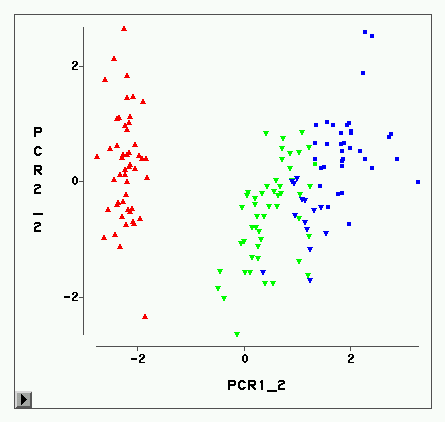Cluster algorithms are increasingly popular in biomedical research due to their compelling ability to identify discrete subgroups in data, and their increasing accessibility in mainstream software. While guidelines exist for algorithm selection and outcome evaluation, there are no firmly established ways of computing a priori statistical power for cluster analysis. Here, we estimated power and accuracy for common analysis pipelines through simulation. We varied subgroup size, number, separation (effect size), and covariance structure. We then subjected generated datasets to dimensionality reduction (none, multidimensional scaling, or UMAP) and cluster algorithms (k-means, agglomerative hierarchical clustering with Ward or average linkage and Euclidean or cosine distance, HDBSCAN). Finally, we compared the statistical power of discrete (k-means), "fuzzy" (c-means), and finite mixture modelling approaches (which include latent profile and latent class analysis). We found that outcomes were driven by large effect sizes or the accumulation of many smaller effects across features, and were unaffected by differences in covariance structure. Sufficient statistical power was achieved with relatively small samples (N=20 per subgroup), provided cluster separation is large ({\Delta}=4). Fuzzy clustering provided a more parsimonious and powerful alternative for identifying separable multivariate normal distributions, particularly those with slightly lower centroid separation ({\Delta}=3). Overall, we recommend that researchers 1) only apply cluster analysis when large subgroup separation is expected, 2) aim for sample sizes of N=20 to N=30 per expected subgroup, 3) use multidimensional scaling to improve cluster separation, and 4) use fuzzy clustering or finite mixture modelling approaches that are more powerful and more parsimonious with partially overlapping multivariate normal distributions.
翻译:在生物医学研究中,群集算法越来越受欢迎,原因是它们具有识别数据中离散的多层面分组的强大能力,而且主流软件中也越来越容易获取。虽然有关于算法选择和结果评价的准则,但没有固定的方法来计算集束分析的先验统计能力。在这里,我们通过模拟来估计共同分析管道的能量和准确性。我们使用不同的分组规模、数量、分解(效应大小)和共变结构。我们随后将生成的数据集置于维度减缩(没有、多层面缩放或UMAP)和群集算法(k-poke、与Ward或平均链接的集聚群集或Cousine距离的聚变异性分类,Euclidean或Cosine距离,HDBSCSCAN)。最后,我们比较了离散(k-moudy)的统计能力,“fuzzy”(c-moudy),“fuzzy”(作用大小(影响大小)和“breablearal roupal lection”) 方法,我们发现结果是由大影响或多组的集集集变集集变小的累积变的累积变换的累积,我们使用。



